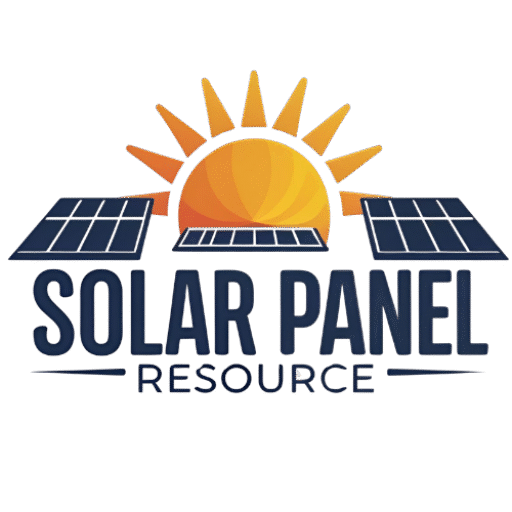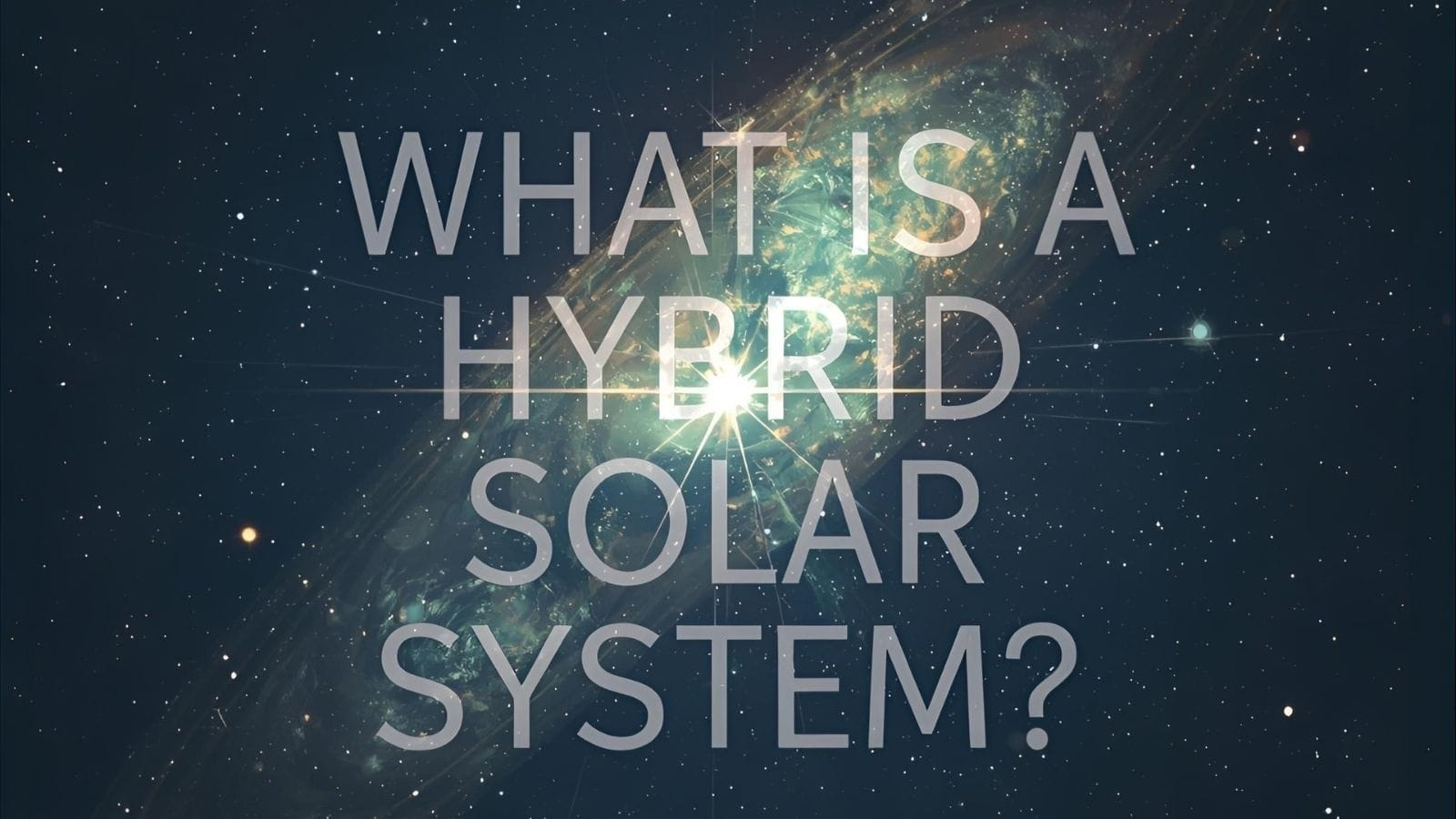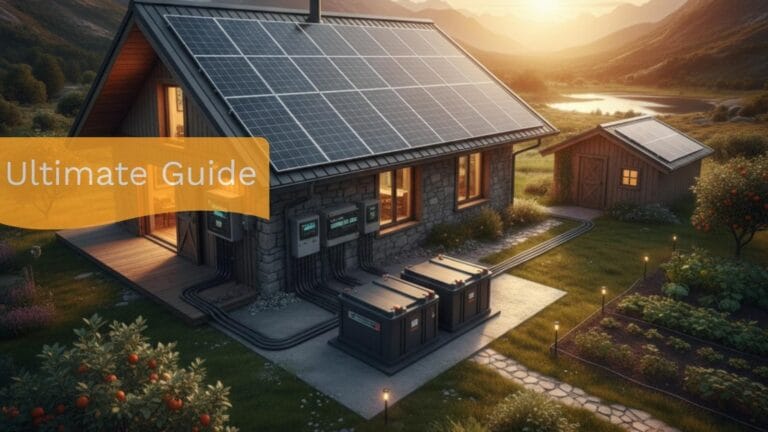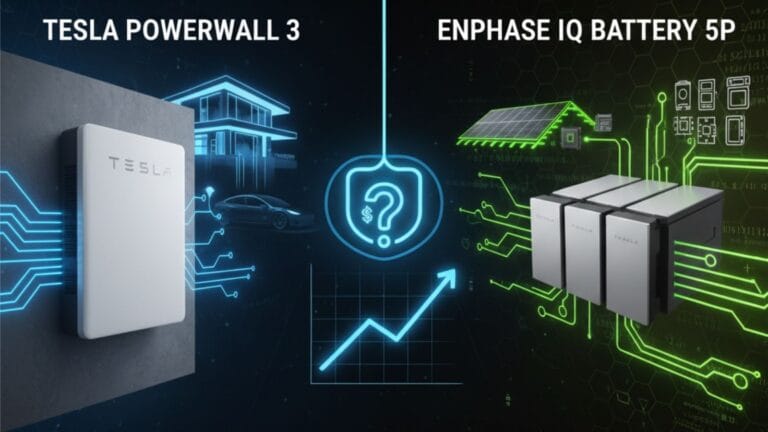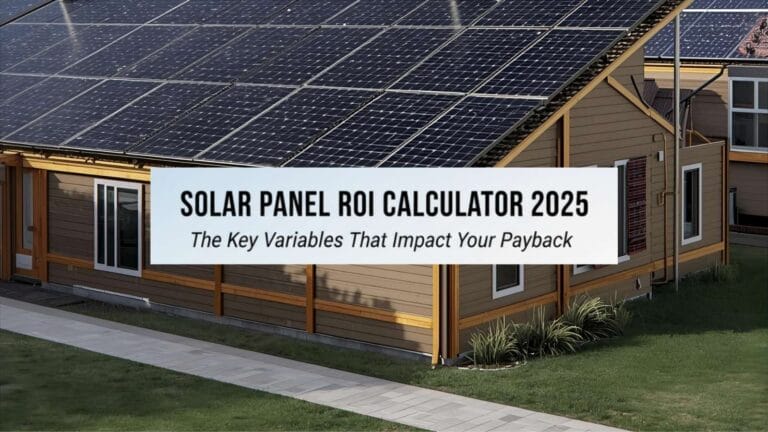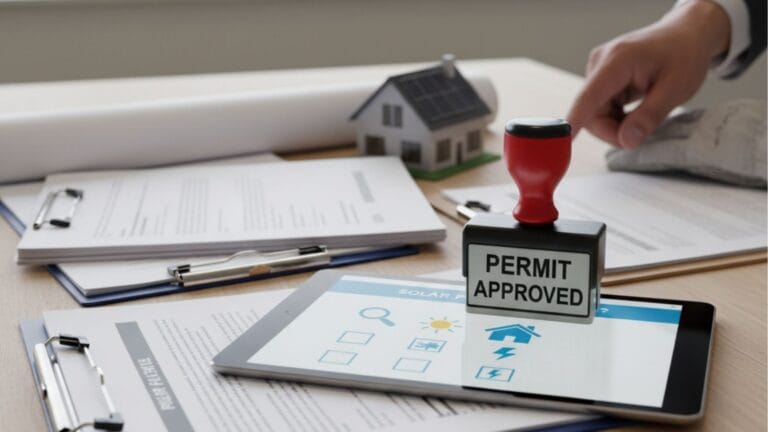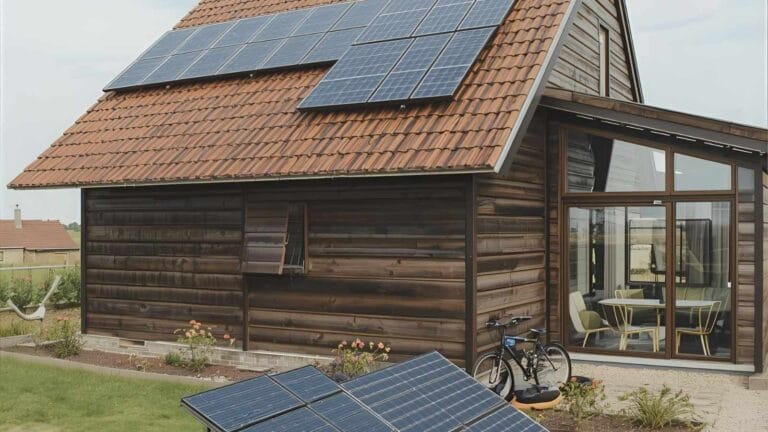What Is a Hybrid Solar System and Is It the Right Choice for Your Home?
As homeowners increasingly seek control over their energy consumption, the solar landscape has evolved beyond simple grid-tied systems. The desire for not just savings, but also for resilience against power outages, has given rise to a powerful and flexible solution: the hybrid solar system. This technology elegantly combines the best of both worlds, offering the financial benefits of a grid-tied system with the energy security of an off-grid setup.
But what is a hybrid solar system, and how do you know if it’s the right choice for your home in 2025? For many, the concept can seem complex, blurring the lines between traditional solar and complete energy independence. Understanding how this system operates, its key components, and its unique advantages is the first step toward making a confident and informed investment in your home’s energy future.
This comprehensive guide will provide a clear, expert-driven explanation of hybrid solar technology. We’ll break down how it works, compare it to on-grid and off-grid systems, analyze its costs and benefits, and provide an actionable framework to help you decide if a grid-tied solar system with battery backup is the perfect fit for your energy goals.
What Is a Hybrid Solar System?
A hybrid solar system is a solar power setup that is connected to the traditional utility grid but also includes a solar battery storage component. This dual connection allows it to store excess solar energy in batteries for later use, such as during the night or during a power outage, while still having the grid available as a backup power source. Think of it like a hybrid car: it primarily runs on its clean, stored energy (the battery) but still has the gas station (the grid) available whenever it’s needed.
How Does a Hybrid Solar System Work?
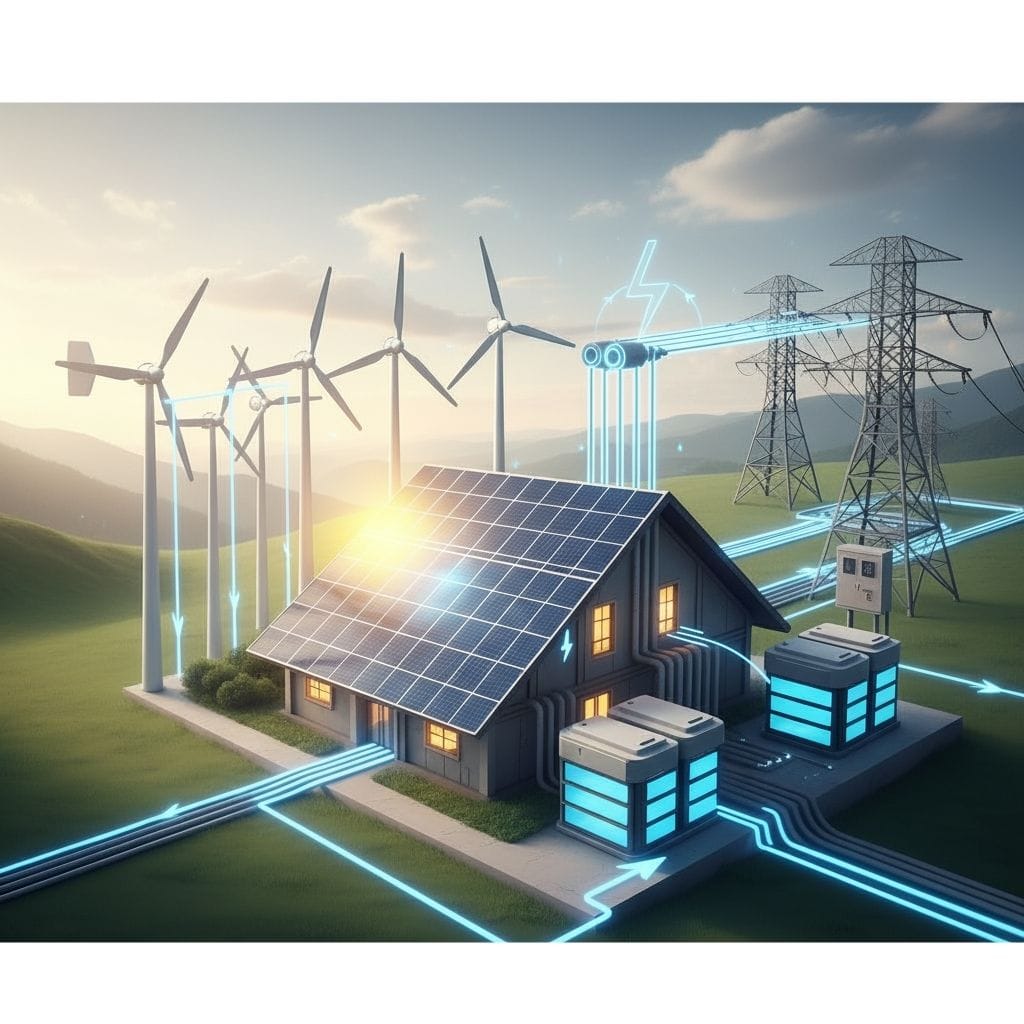
The intelligence of a hybrid solar system lies in its ability to dynamically manage the flow of energy based on your home’s needs, the battery’s charge level, and the status of the utility grid. This process is managed by a sophisticated component called a hybrid inverter.
1. Daytime: Powering Your Home and Charging the Battery
During the day when the sun is shining, your solar panels generate DC electricity. This power flows to the hybrid inverter, which prioritizes its use in a specific order:
- First, the power is used to directly supply your home’s immediate electrical needs (lights, appliances, etc.).
- If there is excess power being generated, that surplus is used to charge your solar battery bank.
This ensures that the energy you produce is used as efficiently as possible, storing every extra drop of sunshine for later.
2. Nighttime: Using Stored Battery Power
Once the sun goes down, your solar panels stop producing power. Instead of immediately drawing electricity from the grid, your home automatically begins to pull power from the charged solar battery. Your home runs on the clean energy you stored during the day, allowing you to avoid expensive peak-hour electricity rates from the utility company in many regions.
3. Power Outage: Your Home’s Island of Power
This is the defining feature of a hybrid solar system. When the utility grid goes down, a standard grid-tied system automatically shuts off for safety reasons. A hybrid system, however, seamlessly disconnects from the grid and creates its own “island” of power. The inverter continues to draw energy from the battery (and the solar panels, if it’s daytime) to keep your essential appliances running. This provides invaluable energy security and peace of mind.
4. Full Battery & Low Usage: Exporting to the Grid
What happens on a sunny day when your home’s needs are met and your battery is fully charged? Only then does the hybrid inverter begin exporting the excess solar power to the utility grid. In regions with net metering policies, you will receive credits for this energy, further reducing your electricity bill.
What are the Main Components of a Hybrid Solar System?
A hybrid system shares many components with other solar setups but has one key differentiator: the specialized inverter that can manage both the grid and a battery bank.
- Solar Panels: Capture sunlight and convert it into DC electricity.
- Solar Battery Bank: Stores excess DC energy. The most common type in 2025 is Lithium Iron Phosphate (LiFePO4) due to its long lifespan and safety.
- Hybrid Inverter: This is the heart of the system. It acts as an inverter (converting DC to AC power), a battery charger, and a transfer switch, intelligently directing the flow of electricity between the panels, battery, home, and grid.
- Racking and Mounting: The hardware that secures the solar panels to your roof.
- Monitoring System: An app or portal that allows you to track your energy production, consumption, and battery status in real-time.
What Is the Difference Between Hybrid, On-Grid, and Off-Grid Solar?
Understanding where hybrid systems fit in requires comparing them to the other two main types of solar installations. The primary difference lies in their connection to the utility grid and their reliance on batteries.
| Feature | On-Grid (Grid-Tied) | Off-Grid | Hybrid |
|---|---|---|---|
| Connection to Utility Grid | Yes | No | Yes |
| Requires Batteries | No (Grid is the “battery”) | Yes (Essential for all power) | Yes |
| Works During a Power Outage? | No (Shuts down for safety) | Yes (Completely independent) | Yes (Primary advantage) |
| Can Export Power to Grid? | Yes (via Net Metering) | No | Yes (When battery is full) |
| Initial Cost | Lowest | Highest (Requires oversized battery/panels) | Medium-High (Due to battery cost) |
| Best For | Homeowners focused purely on maximum financial savings in areas with a reliable grid. | Remote properties where grid connection is impossible or prohibitively expensive. | Homeowners who want both financial savings and energy security/backup power. |
What are the Pros and Cons of a Hybrid Solar System?
A hybrid system offers a compelling blend of features, but it’s important to weigh its advantages against its higher initial cost and complexity. According to the U.S. Department of Energy, “solar-plus-storage” systems are becoming increasingly popular for their ability to enhance resilience. For a detailed look, you can visit their homeowner’s guide here.
| Pros (Advantages) | Cons (Disadvantages) |
|---|---|
| Energy Resilience & Backup Power: Provides seamless power during grid outages, keeping essential appliances running. | Higher Upfront Cost: The addition of a battery bank and a hybrid inverter significantly increases the initial investment compared to a standard on-grid system. |
| Reduced Reliance on the Grid: Allows you to use your own stored solar energy at night, minimizing your dependence on the utility. | Longer Payback Period: Because of the higher cost, the time it takes to recoup your investment through electricity savings is typically longer. |
| Potential for Greater Savings: In areas with Time-of-Use (TOU) electricity rates, you can avoid buying expensive peak-hour power by using your stored battery energy instead. | Battery Lifespan: While modern lithium batteries last a long time (10-15+ years), they will eventually need to be replaced, which is a future expense to consider. |
| Maximizes Self-Consumption: You use more of the energy you generate directly, which can be beneficial in regions with poor net metering policies. | More Complex Installation: Hybrid systems involve more components and more complex wiring than standard grid-tied systems. |
How Much Does a Hybrid Solar System Cost in 2025?
The cost of a hybrid solar system is primarily the cost of a standard grid-tied system plus the cost of the battery bank and the more expensive hybrid inverter. While prices vary by location and equipment quality, the battery is the largest additional expense. The National Renewable Energy Laboratory (NREL) tracks energy storage costs, which have been declining but remain a significant investment.
As a general estimate for 2025, you can expect a quality solar battery to add $8,000 to $15,000 (USD) or more to the total cost of your solar installation, depending on its capacity (measured in kWh). Therefore, a typical hybrid system might range from $25,000 to $40,000+ before incentives.
Is a Hybrid Solar System the Right Choice for Your Home?
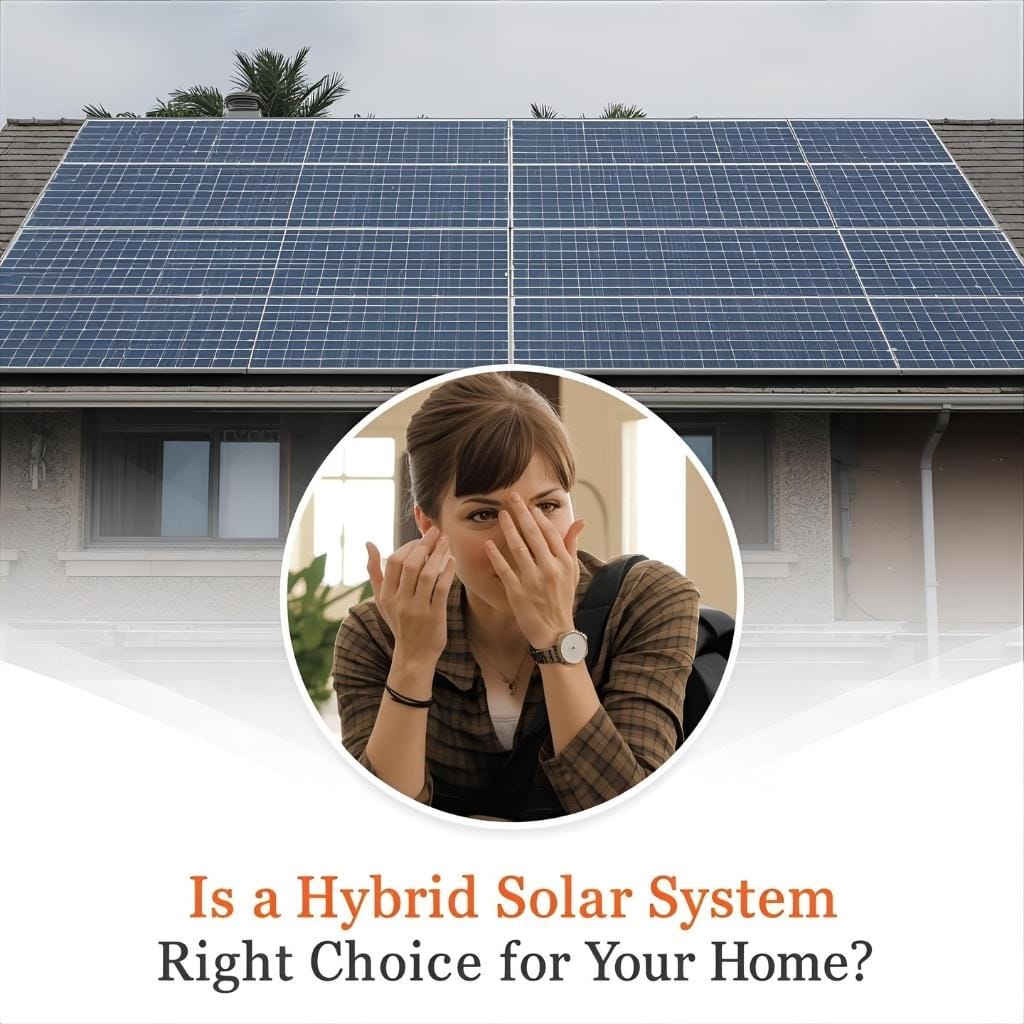
Ultimately, the decision to invest in a hybrid system depends on your priorities, location, and budget. It’s not the right choice for everyone, but it is an ideal solution for many.
You should seriously consider a hybrid system if:
- You experience frequent power outages. If your area has an unreliable grid, the backup power function is the number one reason to choose a hybrid system.
- Your utility has Time-of-Use (TOU) rates. If your electricity is much more expensive in the late afternoon and evening, using battery power during these peak hours can lead to significant savings.
- Your utility offers poor net metering compensation. If you get very little credit for the power you export, it makes more financial sense to store and use that energy yourself.
- Energy independence and self-sufficiency are important to you. You want to rely on your own power as much as possible, regardless of the grid’s status.
A hybrid system may NOT be the best choice if:
- Your primary goal is the fastest possible payback period. A standard on-grid system without a battery will always be cheaper and have a quicker ROI.
- You live in an area with a highly reliable grid and favorable flat-rate net metering. In this scenario, the grid acts as a perfect, free “battery,” making the extra cost of a physical battery harder to justify financially.
Can I Add a Battery to My Existing Grid-Tied Solar System?
Yes, in most cases you can add battery storage to an existing grid-tied solar system. This is known as “retrofitting” a system. There are two main ways to do this:
- AC Coupling: This is the most common method for retrofitting. It involves adding a separate battery-based inverter alongside your existing solar inverter. It’s highly flexible and compatible with almost any existing system.
- DC Coupling: This involves replacing your existing grid-tied inverter with a new hybrid inverter that can manage both the panels and the battery. This can be more efficient but is a more involved and often more expensive upgrade.
The Best of Both Worlds for Modern Energy Needs
The hybrid solar system represents the next evolution in residential energy. By combining a connection to the grid with the intelligent storage of a battery, it offers a powerful solution that addresses both economic and security concerns. While the higher initial cost means it’s not the default choice for every homeowner, its ability to provide uninterrupted power during outages makes it an increasingly compelling and valuable investment in an unpredictable world. If you value resilience and control as much as you value savings, a hybrid system is undoubtedly the right choice for your home.
Last Updated on October 28, 2025

Solar Energy Enthusiast & Renewable Energy Researcher
Vural’s journey into solar energy began four years ago, driven by frequent power outages and high electricity bills at his own home. He has since gained hands-on experience with both personal and commercial solar projects. At solarpanelresource.com, Vural shares his real-world insights and in-depth research to guide homeowners and business owners on their own path to energy independence.
